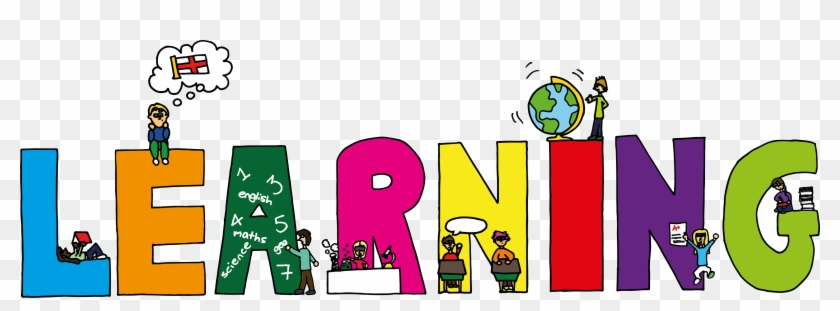ENGLISH-PSYCHOLOGY UNIT : 4 PART : 1 (LEARNING)
LEARNING:
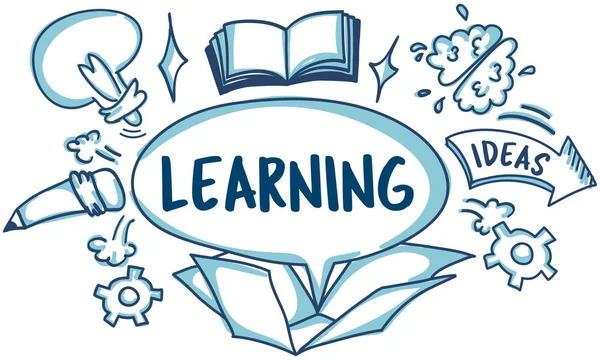
INTRODUCTION (Introduction) :
- One of the most important characteristics of a human being is learning.
- The process of learning begins from birth and continues until death.
- A child begins to understand the world around him through learning.
- Experiences from the environment help a person to change or modify his behavior. Prepares for.
- Learning means a change in a person’s behavior.
- Our personality, habits, skills, knowledge, attitudes, interests and character are largely the result of learning.
- Development of language, development of basic values and knowledge about various aspects of life are obtained through learning and training.
DEFINITION (Definition):

- Learning is a permanent change in a person’s behavior that occurs as a result of any kind of practice or experience. It is seen as a result of.
- A person’s behavior continuously changes and undergoes changes during the period from birth to death. This change in behavior is known as learning.
LOW OF EFFECTIVE LEARNING:
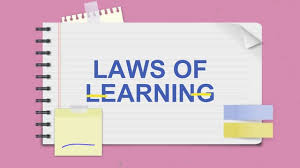
Laws are general principles that people follow when they learn something new.
These rules give us an idea of what usually happens when we learn something new. Laws for learning are as follows:
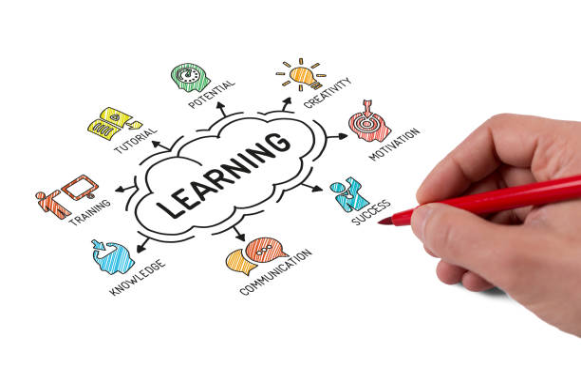
LOW OF READYNESS:
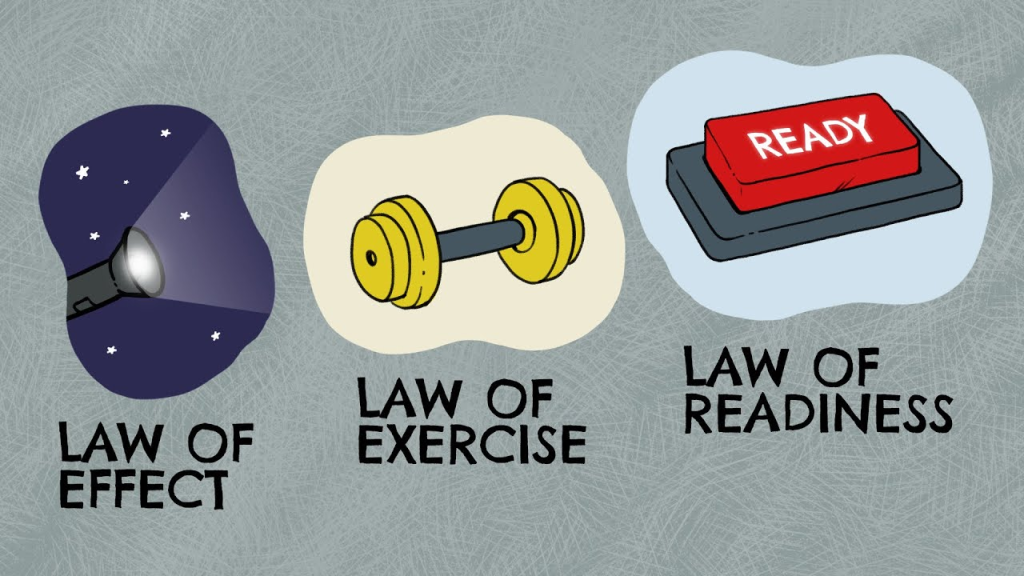
- – The Law of Readiness states that a person should be mentally prepared to learn anything.
- – If a person is mentally prepared, he will be able to learn anything well and get satisfaction from it.
- – If a person is not mentally prepared, he will find it difficult to learn that thing.
- – If a person is willingly ready to learn, he can learn better.
- – For example, a student is more interested in cricket than studies. So that student will have more information about cricket and can play cricket well. While his poor performance will be seen in studies.
LOW OF EXCERCISE OR PRACTICE :
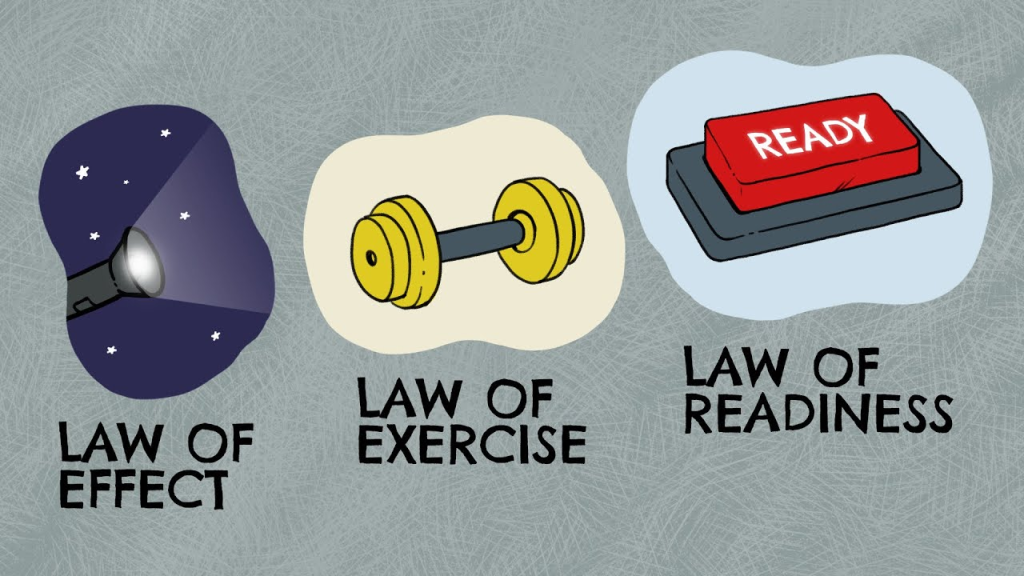
- According to the Law of Exercise, we learn what we practice and we do not learn what we do not practice.
- – If any person repeats a task repeatedly, that task becomes easy for him and he can do it well.
- – Any activity or Which is likely to be forgotten if not used or practiced for some time.
- – Most nursing skills and procedures can be learned by practicing in the ward and community field.
- – Like we can learn how to insert IV cannula and take sutures etc. very well through practice.
- – We can become proficient in games, music, dance etc. through exercise and practice.
LOW OF EFFECT :

- According to the Law of Effect, any person can learn anything by his/her response If a child is given some benefit or prize in return, that person can learn better. – For example, if a child gets a number in an activity, he should be encouraged by giving him chocolate. This will make the child enjoy learning new things. – If a child is punished, the child stops learning. For example, if a child has a bad habit like stealing, if he is punished, the child stops doing that thing.
LOW OF ATTITUDE (Law of Attitude):
- – According to the Law of Attitude, a person’s attitude towards anything is very important for learning it.
- – If a person’s attitude towards learning something is positive, then he will be able to learn that thing well. – For example, if a student nurse’s attitude towards a procedure is positive, then he will be able to perform that procedure well.
LOW OF ANALOGY (Law of Analogy):
According to the Law of Analogy, the response of any person to learn anything is based on the past efforts made on that matter. In which a person acts on any new situation based on what happened to him in the past.
LOW OF MULTIPLE RESPONSE (Law of Multiple Response):
According to the Law of Multiple Response, a person’s response to any new situation is affected by the number of attempts made by that person and out of those many attempts, one correct response is finally found.
TYPE OF LEARNING:
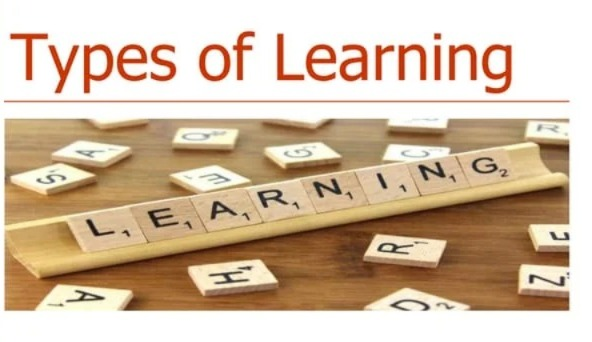
MOTOR LEARNING:
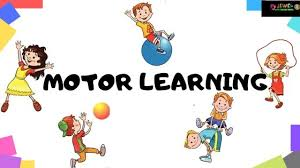
– Most of the actions performed in our daily lives are called motor activities. A person learns something by bringing regularity to his life. For example, walking, driving, running, climbing all these activities use muscles.
VERBAL LEARNING:
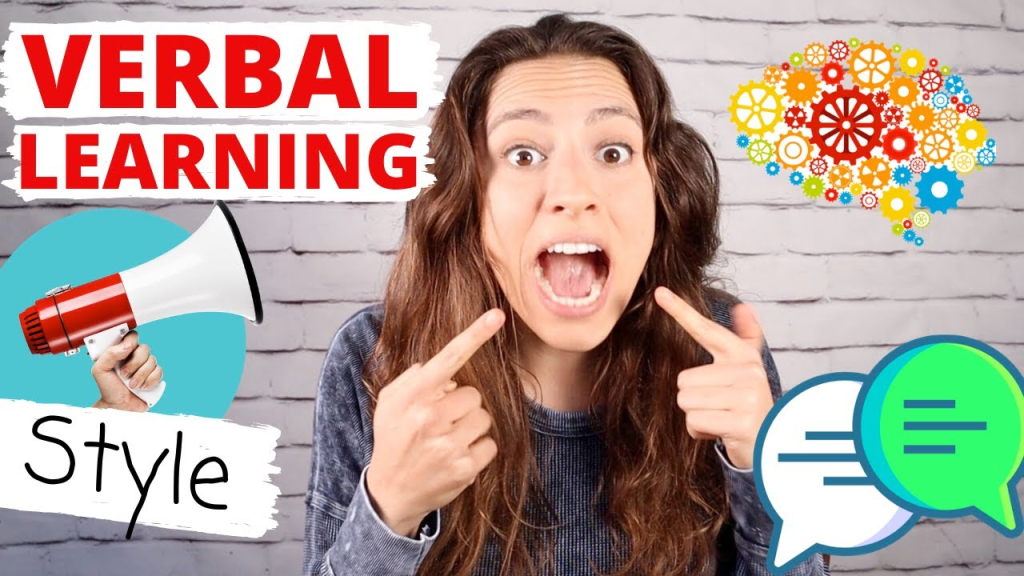
– This type of learning uses language. We can do this type of learning through speaking, using communication tools, signs, pictures, figures, sounds, etc.
CONCEPT LEARNING:

– This type of learning requires special types of brain functions. Thinking, intelligence, reasoning etc. are examples of this type of learning. We learn this type of learning from childhood. For example, we see a dog and understand the word dog. So we understand that dog is the name of a particular animal. This type of learning is useful for identifying something.
DISCRIMINATION LEARNING:
– The difference between a stimulus and the appropriate response to the stimulus is known as discrimination learning. For example, the sounds of different vehicles such as buses, cars, ambulances.
LEARNING OF PRINCIPLE:
– The learner learns through the different principles of science, grammar, etc. appropriate to the language. Using each of these, a person makes his work easier.
PROBLEM SOLVING:
– This is a high level of learning. Which requires cognitive abilities to learn. Such as thinking, reasoning, observation, imagination etc. are very useful. Which helps people solve their problems.
ATTITUDE LEARNING:
– Attitude directly affects our behavior. We develop attitudes towards people from childhood. Our behavior can be negative or positive depending on our attitude. For example, a nurse’s attitude towards her profession and patients.
– Attitude directly affects our behavior. We develop attitudes towards people from childhood. Our behavior can be negative or positive, depending on our attitude. For example, the attitude of a nurse towards her profession and patients.
FACTORES AFFECTING LEARNING:
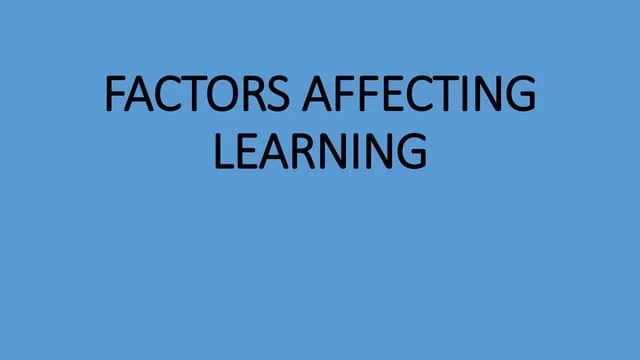
– Successful learning depends on three elements:
1) Learner
2) Learning material (learning material)
3) Learning Method (Learning Method)
1) Learner:
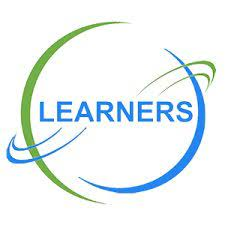
To learn anything, the learner i.e. the person who learns is a very important factor. Learning cannot happen without the learner. The following factors are associated with the learner which mainly affect learning.
• Age:
– Age is the main factor affecting the learner. Age is the main factor affecting the capacity of learning. Children cannot learn anything easily because they are younger than adults.
• Intelligence:
– Intelligence mainly affects learning. A person with a good intelligence level will be able to learn anything easily and in a short period of time.
• Attention:
– If a learner can focus his attention well, he can learn well. If a learner cannot concentrate properly, then he cannot learn anything easily.
• Motivation :
– Motivation is important for a learner to learn anything well. If the motivation to learn anything is constantly available, it can be learned well. If the learner is not motivated, then despite all the efforts, he will fail.
• Readiness and Will Power:
– The learner’s readiness, that is, his readiness to learn, is very important for good learning. If he is physically and mentally ready, then he will be capable of learning anything and he will be able to maintain his interest. The will power in the learner will make him successful even in difficult situations.
• General health:
– It is very important for the learner to have good mental and physical health for learning. If the learner’s physical health is good, he can learn well, but if he has any physical defect like myopia, hyperopia, etc., the condition affects the learning process. Along with physical health, mental health also affects the learning process. A person’s anxiety, stress, tension, etc. affect learning activities.
• Fatigue and Rest:
– If a person is tired and has not rested enough, he will not be able to concentrate on anything and will not be able to learn well. Therefore, rest is very important for the learner.
• Ability of the learner:
– Which includes the learner’s intelligence, creativity, ability, etc. Which are very important for learning.
• Level of Aspiration and Achievement:
– If the learner’s achievement level is high, he works hard and achieves more. Along with this, the achievement level also depends on the ability of the person.
2) Learning material:
– The nature of the learning material is very important for learning. If the learning material is of such a nature that the learner can understand it properly and maintain his interest, then the learner can learn it well. But if the learning material is complex and uninteresting, learning cannot be learned well.
3) Learning Method:
The method used in the learning process is very important for learning well. If this method suits the learner and his interest is maintained accordingly, then learning can be done well.
Principles of learning:
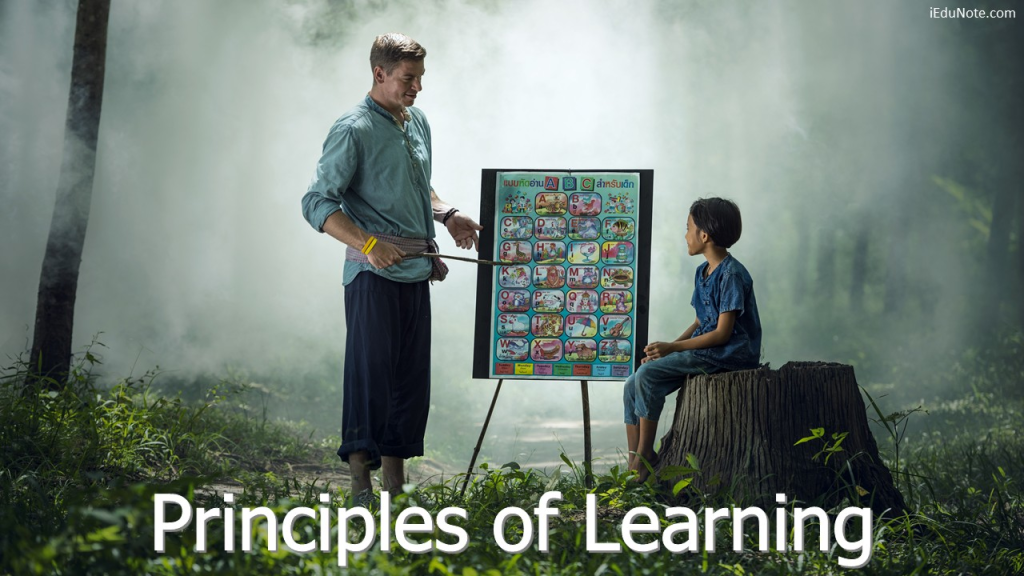
•Definite goal :
– For good learning and continuous motivation, the goal should be clear, due to which learning can be done easily.
•Exercise and Repetition (Exercise and Repetition) Repetition) :
– To learn any new thing, it is very important to repeat and practice that thing frequently. Even complex and difficult material can be understood and learned well through frequent exercises and repetition.
•Parts Learning (Parts Learning):
– If any learning material is long, then learning becomes easier by dividing it into different parts.
• Reward and Punishment (Reward and Punishment) :
– Reward and punishment have a great impact on learning. If a person learns well, he is appreciated through rewards. But if a person learns badly, he is given punishment.
• Result as a feedback (Result as a feedback) :
– Learning improves by reviewing and giving feedback at regular intervals.
• Good physical atmosphere (Good physical atmosphere) Atmosphere:
– Adequate light and ventilation, quiet and clean space, appropriate room temperature and necessary furniture etc. affect the learning process.
• Overlearning:
– Research has proven that overlearning increases memory and enables better learning.
Theory of Learning:
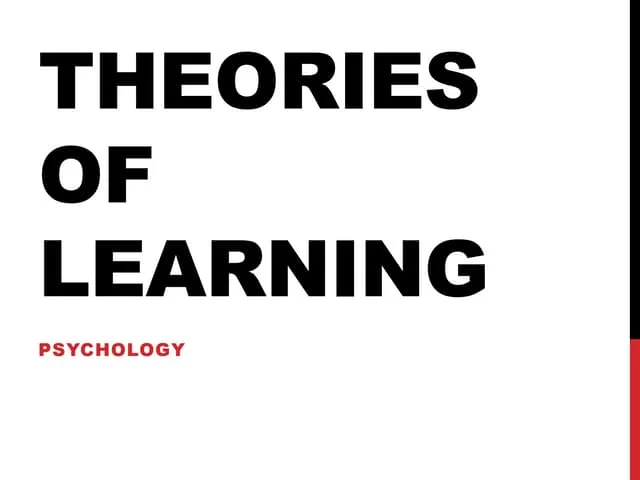
– Psychologists have tried to explain how people learn and why they learn. For this, they have conducted many experiments on animals and children and based on them they have determined that an animal or a person learns through a certain method which is called the Theory of Learning.
In many books, this theory is considered as a type of learning. The word learning is a broad term. It covers a wide range of activities which cannot be explained in a limited framework.
1. Trial and Error Learning Theory:

- – The first scientific theory of learning by American psychologist Edward Thorndike The study was conducted.
- – Edward Thorndike is called the Father of Educational Psychology.
- – This theory was given by Thorndike. It states that a person or animal learns through trial and error. According to him, learning is a gradual process. According to this theory, repeated trials reduce the rate of error. For this, he conducted many experiments on animals.
Experiment (Experiment):
- – He put a hungry cat inside a puzzle box. He kept a piece of food at some distance outside the puzzle box. So if the cat wants to reach the food, it has to open the door of that puzzle box.
- – If the cat pulls the loop of code in the puzzle box and presses the lever, the door opens.
- – The cat made many unnecessary movements to open the door but the door did not open. In this way, after trying many times, the cat unknowingly pulls the loop and the door opens. Thus the cat reaches the food.
- – After many tries in this way, the cat learns that pressing the lever straight up opens the door and it can reach the food.
- – The time and unnecessary moments required to reach the food gradually decrease from the first to the last try. Thus the cat learns through trial and error.
- – According to Thorndike, the amount of error can be reduced with repeated attempts. Animals learn through these actions.
- – We also learn swimming, cycling, etc. through this method. A child also learns to walk, sit, run, etc. through this method. But this method wastes a lot of time.
Trial and error method can be used as follows:

- – When the learner is completely motivated and their goal is clear. (Here the cat is the motive and the food is the goal.)
- – When perception and other learning activities are not sufficient.
- – When the learner fails to find a solution to the problem through perception, understanding, intelligence.
2.Theory of conditioned reflexes:
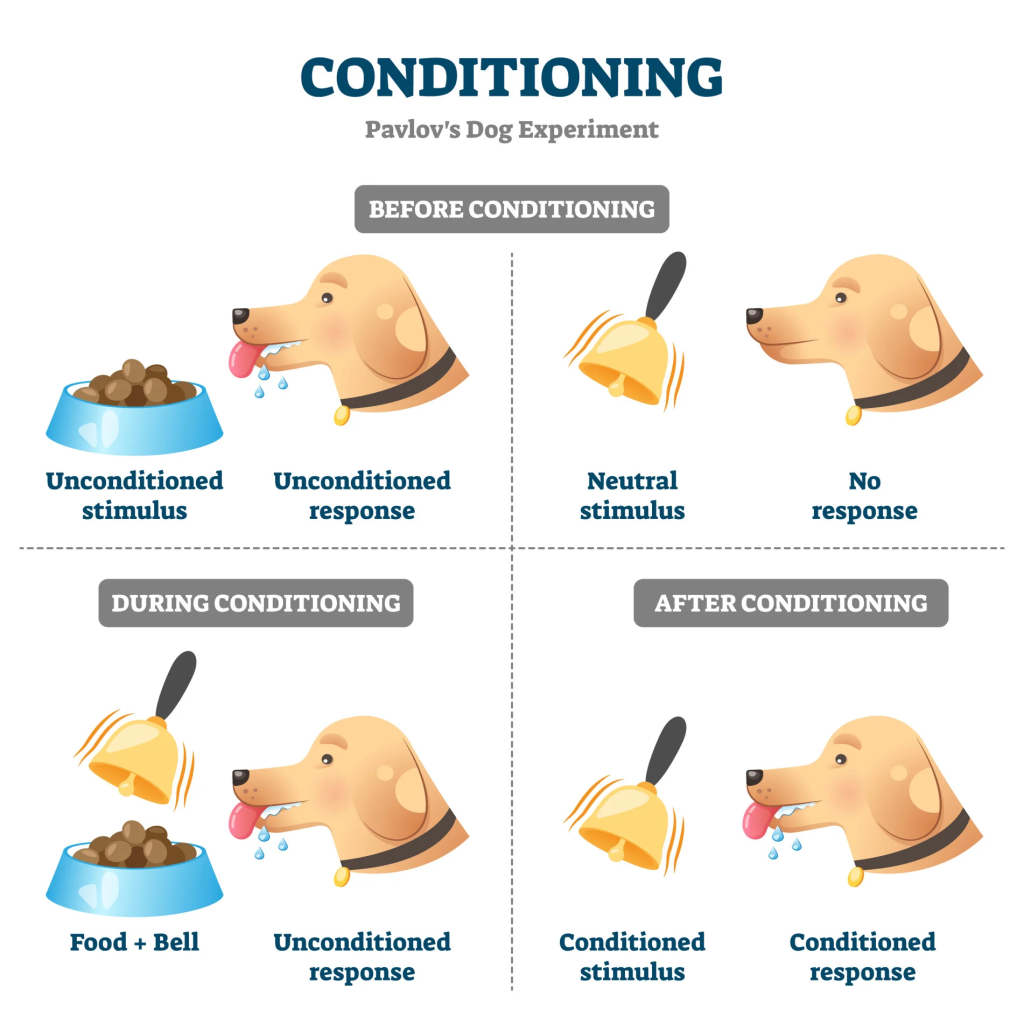
– Conditioning means adapting to a new situation or adjusting to that new situation.
– There are two types of conditioning:
• Classical conditioning
• Operant conditioning
1.Classical conditioning:

- – This method was discovered by Russian physiologist Ivan Pavlov. He received the Nobel Prize in 1904 for the discovery of this method.
- – Classical conditioning is called the theory of response to any stimulus.
- – Ivan Pavlov conducted an experiment on dogs.
- – According to Pavlov’s experiment, he placed a capsule in the dogs to measure salivation. Which measured the flow of salivation.
- – When the dog was given meat powder, a bell was arranged to ring at the same time and the time was also recorded.
- – Pavlov trained the dog. When the bell rang, food was given to it immediately. He continued to give food immediately after the sound of the bell for some time.
- – During this training, he measured salivation. For this, he rang a bell and measured the flow of salivation.
- – He noticed that the sound of ringing a bell increased the salivation of the dog.
- – He served both the bell and the food for a long time. Later, he measured the flow of salivation with the help of the sound of the bell alone.
- – He noticed that after training, salivation increased even by ringing a bell. This is a conditioning response.
- – This theory shows that if even a common object like a bell is paired with meat powder, the capacity of the bell sound to produce salivation becomes the same as that of meat.
- – The theory shows that when conditioned stimulation is paired with unconditioned stimulation, the conditioned stimulation proves to be as effective as the unconditioned stimulation.
- – According to this theory, the connection between these two conditions is in the brain. The brain works the same way during both conditioned and unconditioned stimulation. As a result, the unconditioned stimulus automatically responds.
- – Humans and animals use the principles of classical conditioning in the following areas:
- – Using this principle of classical conditioning, good habits can be developed in a person.
- – Using this principle, any bad habit can be abandoned and the fear of the situation can be removed.
- – These principles can also be used to train animals.
- -These principles can also be used for some psychotherapies. It is useful for changing a person’s behavior and attitude.
2.Operant conditioning:
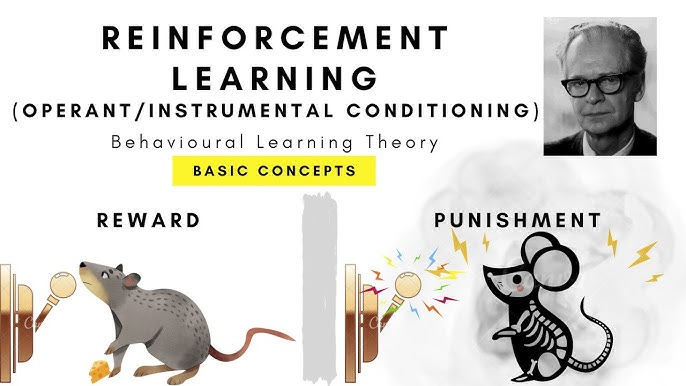
- – This is another method of conditioned learning that was developed by American psychologist B.F. Skinner.
- – This method is also called instrumental conditioning.
- – This method works on the principles of Law of Effect and is based on the basis of reinforcement.
- – Skinner made instrumental conditioning more popular. For this, he has also experimented on pigeons, rats and humans.
- – Skinner placed the rat inside a glass box. This box is called the Skinner box.
- – The Skinner box is a small chamber made of glass. It contains a speaker, signal light, lever, food dispenser, in which shocks were generated by the dispenser pallet and an electric grid floor.
- – The rat placed in the Skinner box could move freely in the box. When the lever in the box is inadvertently pressed by the rat, the food outside the box falls inside the box. In this way, based on the experiment with the rat, it was found that when the lever is pressed, it gets food in return. Here, food is the stimulus.
- – The rat repeatedly pressed the lever unconsciously and each time it got food. So the rat gradually learns. Here, the rat gets food by pressing the lever, which is reinforcement. The rat learns that pressing the lever gets food, so it presses the lever repeatedly.
- – Animals and humans learn by this method in our daily lives.
- – Here reinforcement is the motivation factor. This action motivates the animal to repeat it.
- – Skinner noted that if we reward an activity, it is repeated repeatedly.
- – Instrumental conditioning is associated with many of our actions. Thus, a very important aspect of this method is reinforcement.
- – in which positive reinforcement is useful for revolved training. And negative reinforcement such as punishment is useful for preventing unwanted behavior.
- – This method is very useful for modification, in addition to being useful in treating mentally retarded persons and phobias and drug addicts.
Reinforce (Reinforce) :
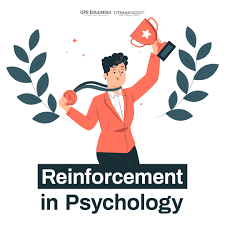
– Reinforcement is any event that strengthens and increases behavior. There are two types of reinforcement:
1) positive reinforce
2) Negative reinforce
1) Positive reinforce:
– In positive reinforce, a reward or gift is given to appreciate a liked activity or behavior. For example, if a child gets good marks in studies, he is appreciated by giving him a gift.
2) Negative reinforce:
– Negative reinforce is also known as punishment. In it, punishment is used to prevent an unwanted activity or behavior. Such as punishing a child for staying in the manor.
Operant conditioning uses are as follows:
Shaping (Shaping):
– Giving the person the opportunity to learn according to his wishes. In which he is taught step by step. In this method, after the person learns one step, the next step is taught.
– Unwanted behavior can be made to behave correctly with the help of shaping. Here the learning process is according to the wishes of the person. When a child first learns to speak, he speaks the first word. Later, gradually, the uncle and aunt learn to speak.
Behaviour modification:
- – Operant conditioning is used for the treatment of patients. This is called behavior modification therapy.
- – In this method, a person with a behavior problem is taught behavior that is accepted and approved by society. With the help of this method, a person can be taught with little effort.
- – Most of the mentally retarded children can be easily taught their life essential activities through this method. Which mostly includes dressing properly, eating and drinking habits and toilet training.
- – Apart from this, phobias, drug abuse and alcoholic patients can also be treated with the help of this method. Such patients can be given appropriate treatment with the help of psychotherapy and behavior modification therapy.
3. Cognitive theory of Learning:
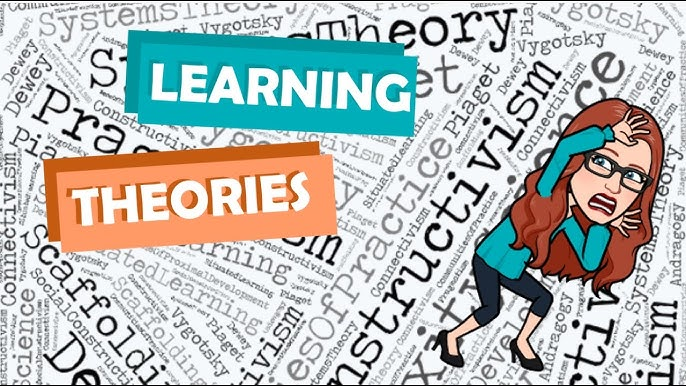
– Perception, knowledge and cognitive processes play an important role in learning.
– According to cognitive theory, stimulation and response are not only associated with learning but the cognitive structure in memory provides the necessary information for learning. Understanding is important for cognitive theory.
Cognitive theory is of two types:
• Insight theory of learning
• Sign theory of learning
4.Insight theory of learning:
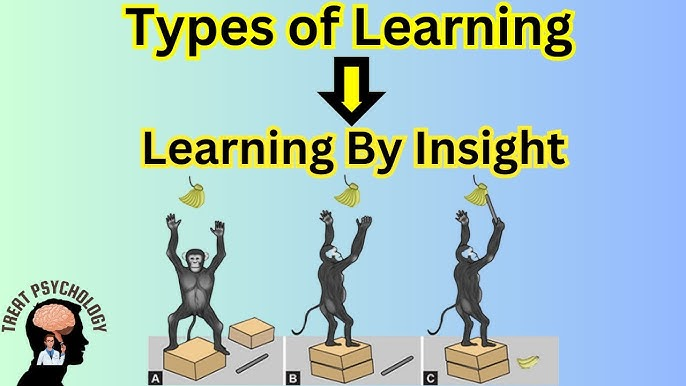
- – Kohler was a German psychologist who conducted experiments based on the inside learning theory.
- – Based on this experiment, he proved that a person or animal learns quickly from their inner instincts without going through trial and error. In which most of the problem solving, puzzle solving is done with this method. With the help of this method, a lot of time is saved.
- – Kohler conducted this experiment on chimpanzees. The chimpanzee’s name was Sultan.
- – They put Sultan in a cage and placed bananas outside the cage at a short distance from the cage.
- – These bananas were not easily accessible to Sultan. Two sticks were placed inside the cage. These two sticks could be fitted into each other and become longer.
- – The hungry Sultan tried to reach the banana with his first hand. But when he failed, he tried to reach the banana with a piece of stick but failed.
- – So Sultan gave up trying to reach the banana and started playing with the stick. In which suddenly while playing, both the sticks fit together and the stick became long. With the help of which Sultan immediately got the banana and started eating.
- – The idea of reaching the banana with a long stick suddenly came to Sultan’s mind. It is called inside.
- – For this, Kohler did many experiments. He noted that animals learn based on experience and not just on trial and error.
- – Kohler’s experiments prove that the solution of a problem is not only possible through trial and error but that the solution to a problem can also be learned based on experience.
5. Sign theory of learning:
- – Sign theory of learning was given by Edward Tolman.
- – According to him, learning is a process that occurs through cognition. Therefore, learning does not require stimulation or reinforcement.
- – Cognition includes knowledge, thinking, planning, purpose, etc.
- – The term cognitive map was given by Tolman. That is, a person follows certain signs and signals according to the map created by his mind and finally reaches the goal.
- – The learner recognizes certain signs and signals through his experience and reaches the goal.
6. Social Theory learning:
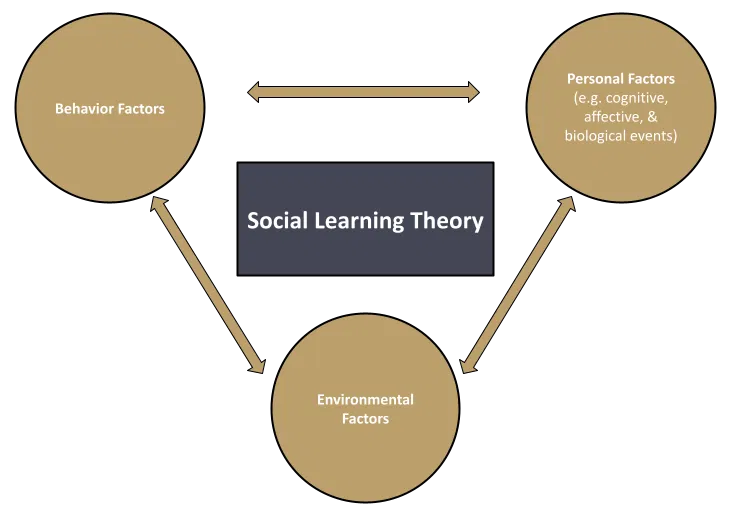
- – There are many learnings that we cannot explain with conditioning.
- – Like we learn some actions through observation. Social learning theory is based on the foundation of observation.
- – Social learning theory is based on modeling. According to this theory, a person imitates others by watching them.
- – Imitation is based on this theory. It is useful for learning many skills.
- – For example, a student nurse learns to give an injection by watching and imitating a staff nurse.
Bandura experiment:
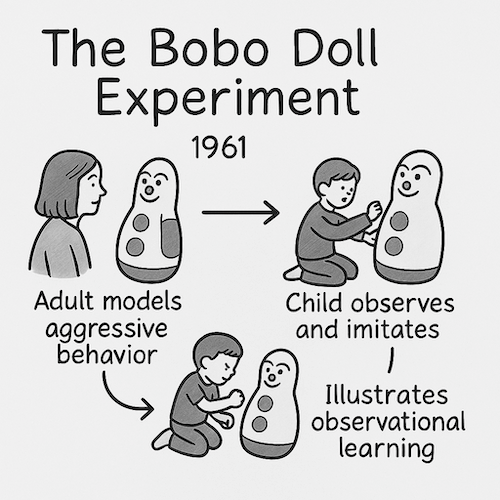
- – Albert Bandura and other researchers conducted many experiments. And they explained the contribution of observation in learning.
- – They took a total of 72 preschool children. They divided the children into three groups of 24 each.
- – They first played a Bobo doll model against a group of 24 children. In which an adult person behaved aggressively towards the Bobo doll. He was kicking the doll, throwing it in the air and behaving badly with it.
- – He played a role with a Bobo doll in front of the other 24 children but in it he behaved non-aggressively with the Bobo doll. That is, he did not behave badly with the Bobo doll.
- – While he did not play any role with the third 24 children.
- – He saw that if the Bobo doll was placed in front of the first 24 children, those children behaved aggressively towards it, which he had seen in the role play. Those children were kicking the Bobo doll and throwing it in the air.
- – When the Bobo doll was placed in front of the other 24 children, those children did not show any aggressive behavior towards the doll because they had not seen it in role playing.
- – While the 24 children of the third group showed normal behavior towards the Bobo doll.
- – From this experiment, it can be said that we learn as we observe. Therefore, this theory is also called observational learning theory.
The practical importance of this theory is as follows:
- – Both children and adults learn through observation and imitation.
- – A child learns language, social skills, habits and Behavior is learned by watching its parents and other children.
- – Academic, athletic and musical skills can be learned through this learning method.
- – Plays an important role in the personality development of the child.
- – In children with fear, their fear can be reduced with the help of this method.
- – This method is useful for removing fear in patients with phobias.
- – Modeling is used in weight reduction and smoking cessation programs.
Modelling process:
– Not all observed behaviors can be effectively learned. Both the model and the learner play an important role in social learning. For this, certain steps have to be considered. The steps are as follows:
• Attention (Attention) :
– If you want to learn anything, then you need to have attention for it. If you do not pay proper attention to that thing, then it has a negative effect on your learning.
• Retention (Retention) :
– Storing the information that has been acquired is also important for the learning process.
• Reproduction:
– Along with attention and retention, practicing that thing is also equally important. If it is not practiced, then that thing cannot be learned properly.
• Motivation:
– Motivation is also necessary for successful observational learning. We need to have motivation for the behavior performed by the model. Reinforcement and punishment play an important role in motivation.
Nature of Learning:
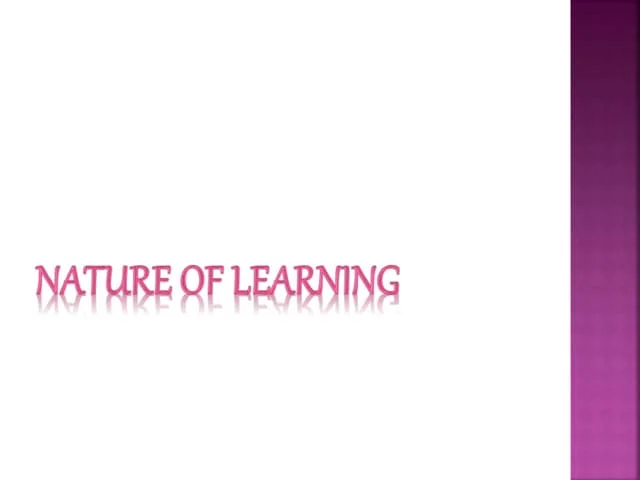
• Learning is Universal:
– Learning is universal. Every living being learns. Of which humans learn the most. Thus, every living being in the world learns differently in different places.
• Learning is a process of modification in behaviour (Learning is a process of modification in behaviour):
– Whatever we learn, changes are seen in our behaviour.
• Learning is adjustment to situation (Learning is adjustment to situation) Situation):
– Learning teaches a person to adjust to any situation. As a person learns new things, his efficiency increases and the person becomes able to adjust to new situations well.
• Learning is Continuous (लेर्निंग इस च्यान्डियास):
– Learning is a lifelong process. As long as humans live, learning continues.
• Learning is through experience :
– People and animals learn a lot through experience.
• Learning Comes from All Sites :
– You can learn something new from all places. Children learn from parents, teachers, environment, media, etc.
• Learning is a purposeful and goal-directed process:
– Learning is a goal-directed and purposeful process. If the goal is not clear, a person cannot learn well.
• Learning comes as a result of practice:
– Learning becomes more effective through practice and repetition. With practice, we can become a master of anything.
Transfer of Learning:
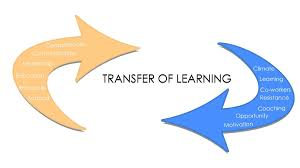
- – The learning process continues throughout a person’s life. The effect of past learning is seen on everything we learn
- – How quickly we learn depends on how much we have previously learned.
- – Most learning is transferable. A person can easily learn from one situation to another modified situation.
- – The total or partial knowledge, skills, habits, attitudes, etc. acquired by a person are acquired from one situation to another.
- – Therefore, transfer of learning is a process in which we use what we have learned from one situation in another.
Type of transfer of learning (Type of transfer learning):
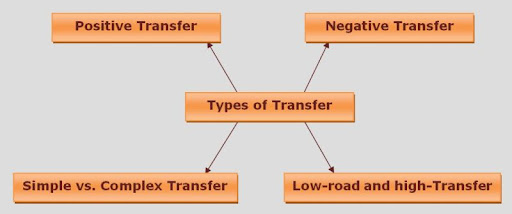
Positive transfer (Positive Transfer):
– When the learner’s knowledge of a previously learned situation helps them learn in a new situation, it is called positive transfer. For example, if a learner is good at riding a bicycle, he or she will be able to ride a motorcycle easily.
Negative transfer (Negative transfer):
– The difficulty that a learner faces while moving from one task to another is called negative transfer. For example, a right-handed person may have difficulty writing with their left hand.
Neutral transfer (Neutral transfer):
– When a person’s previously learned knowledge is not useful in a new situation, it is called zero transfer. For example, knowledge of history does not help a person in learning to drive a car.
Theory of transfer learning Learning):
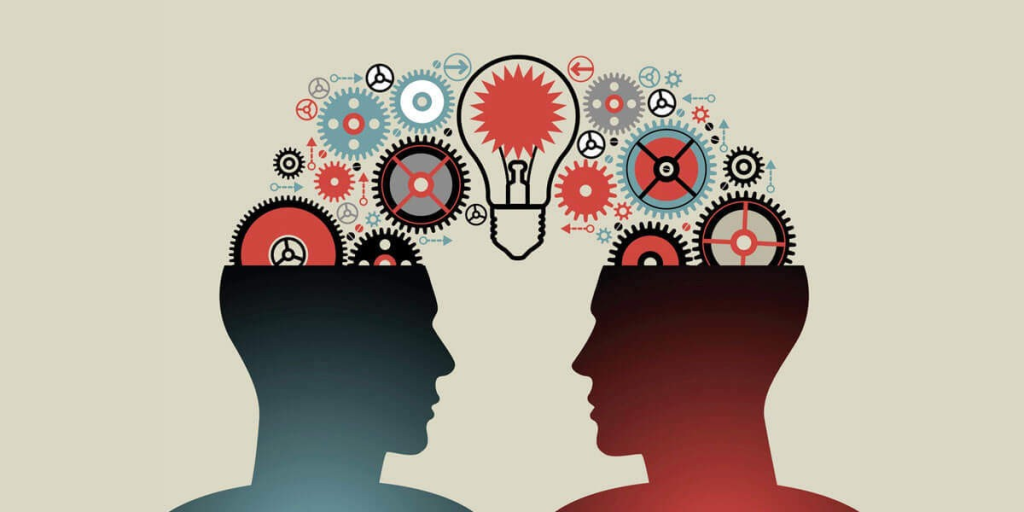
•Theory of Mental Discipline (Theory of Mental Discipline) :
– According to this theory, whatever new thing we learn, the new thing we learn is useful in another field so that we can understand the other field better. Such as logic, grammar, science, mathematics etc. For example, if we have learned logic well, we can use it to solve problems.
• Theory of Identical Elements:
– According to Thorndike, knowledge transfer occurs when the elements in one situation match the elements in another situation, that is, knowledge transfer occurs only when the elements of both situations are similar. For example, after learning a bicycle, while learning a car, some common elements are found in it such as steering movement, traffic rules, etc.
• Theory of Generalization :
– According to Charles Judd, due to some experiences, a person gets some conclusions and generalizations from them such as some rules, principles, laws. Then he uses these principles, rules in new situations.
• Gestalt theory
– Transfer of learning occurs only when a person understands information and ideas well and uses that information and ideas during their daily life experiences.
• Theory of Ideal:
– According to Begley, ideals are deeper than generalizations, so ideals are an important basis for mutual learning. Once ideals are adopted, they are applicable to all situations. Ideals like curiosity and a sense of inquiry are transferred from one situation to another.
